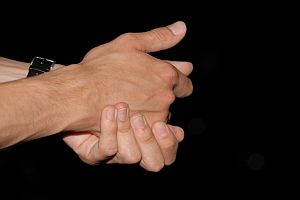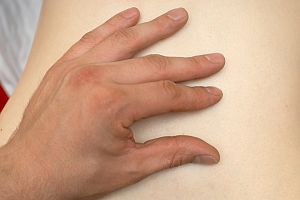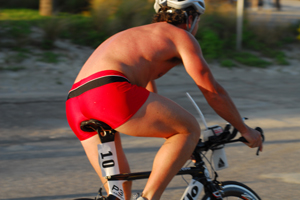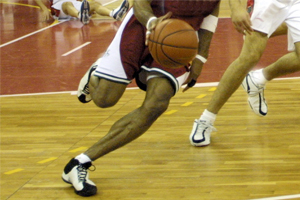








Active release therapy or (ART) heals your body’s soft tissue using manipulation and movement combined. The method has been in existence for over 30 years and Active Release Therapy is available here at our practice in Manhattan.
ART basically identifies, isolates, and targets the injured area which breaks scar tissue up. Doing this allows for a better blood flow and quick healing of injuries. ART is used to treat muscles, ligaments, tendons, and nerves. Chiropractor Dr. P. Michael Leahy first introduced this method to treat soft tissue disorders in professional athletes and was soon after discovered to be perfect for treating all people. Many healthcare providers, like active release therapy Manhattan are trained in ART. These include: chiropractors, physical therapists, massage therapists, and physicians. Art is used to treat back pain, headaches, and other symptoms caused by soft tissue conditions and injuries.
Fascia, major muscle groups, and tendons and ligaments are all things ART can treat. Others include: Low back pain, chronic neck pain, tension headaches, shoulder strains, carpal tunnel syndrome, shin splints, and sciatic nerve pain. ART breaks up adhesions. Adhesions are dense collections of scar tissue that occur when muscles and connective tissues are injured. When this tissue is bound together, it limits flexibility. The limit in flexibility causes pain and stiffness in muscles and joints.
Adhesions can also entrap nerves. The manipulation of the soft tissues breaks up these adhesions so your muscles, joints, and nerves can work freely again. During an ART session at active release therapy Manhattan, they will feel the injured area and figure out the location of the scar tissue. ART will then be used to isolate and target the area. This will in turn break up the scar tissue and restore blood flow.
Some common signs of scar tissue are: neck, elbow, hand, knee, or back stiffness, pain during workouts, sharp heel pain, numbness, tingling/ pain in the fingers, reduced flexibility, and or decreased strength.
WIth that being said, here are some benefits of ART: increased flexibility, increased range of motion, less low back pain, improved chronic neck pain, relief of tension headaches, management of carpal tunnel, management of shin splints, management of plantar fasciitis, management of tennis elbow, and improvement of sciatic symptoms. Active release therapy Manhattan wants you to know some other alternatives to this: deep tissue massage, rolfing, graston technique, neurokinetic therapy, and dry needling.
If you have any questions, please contact us, we would be happy to help you. We have been treating people with Active Release Therapy in Manhattan for many years and would love to help you.
In pain? Want a tune up? Call us today (908) 325 – 3000. We can treat and help you.
 Poor body mechanics. An injury. Tension. Pain can occur any number of ways. In some cases, the pain will subside after you have taken a rest. In other cases, the pain may recur, preventing you from going about your daily routine. Some of the more serious issues will lead to chronic problems that may require medical treatment and procedures.
Poor body mechanics. An injury. Tension. Pain can occur any number of ways. In some cases, the pain will subside after you have taken a rest. In other cases, the pain may recur, preventing you from going about your daily routine. Some of the more serious issues will lead to chronic problems that may require medical treatment and procedures.
The good news is that there are innovative treatments that eliminate the need for prescription medicine, which usually comes with side effects, and invasive procedures. Active Release Technique NYC therapists indicate, is one such treatment.
Active Release Technique or ART is a patented, state-of-the-art soft tissue system, which is movement-based. Qualified practitioners use hands-on techniques, re-establishing the proper motion that occurs between your muscles and fascia, all the while reducing fibrous adhesions. This restores proper function, and thus, facilitates healing.
Know that your ART practitioner will have well over 500 particular moves as part of its treatment protocol. Of course, not all 500 moves will be used on one patient alone, just as no patient will receive the same sort of moves, considering that every condition, every body is different. This naturally means that you will receive a customized treatment plan, giving you a greater chance for recovery.
What can you expect during your session?
A session will combine examination with treatment as your ART practitioner uses his or hands to assess the movement of your muscles, ligaments, and tendons, and gauges the tightness in your body. Your practitioner will then ask you to do specific movements, while tension is applied to the affected area or where the dysfunction is occurring.
According to physical therapists, ART has the ability to restore flexibility and functionality, allowing you to experience less pain. All without having to take pain medication.
But what conditions are best for Active Release Technique?
The ART system can treat any conditions due to overused muscles, which can drastically change when micro trauma is introduced or when the muscles are not getting enough oxygen. This can lead to dense scar tissue preventing you from moving freely. And when it builds up, further problems ensue, namely loss of strength, reduced range of motion, pain, and tendonitis.
If you are experiencing the following conditions, look for a physical therapy clinic that offers the ART system, and you will heal sooner than you think:
 Those who have sought treatment for migraines, carpal tunnel syndrome, sciatica, back pains and knee problems may already be familiar with Active Release Techniques(ART) which area patented, state-of-the-art movement-based soft tissue system. What the system does is it re-establishes proper motion between muscles and fascia while minimizing fibrous adhesion’s, making it a popular treatment for people with anything from acute to chronic pains, to strain injuries, to post-operative cases.
Those who have sought treatment for migraines, carpal tunnel syndrome, sciatica, back pains and knee problems may already be familiar with Active Release Techniques(ART) which area patented, state-of-the-art movement-based soft tissue system. What the system does is it re-establishes proper motion between muscles and fascia while minimizing fibrous adhesion’s, making it a popular treatment for people with anything from acute to chronic pains, to strain injuries, to post-operative cases.
ART treatment is very effective; in fact, its results can be both instantaneous and long-lasting especially for conditions which are basically the result of overused muscles. Feedback from patients reveal that after receiving proper ART treatment, most (if not all) discomforts such as numbness, pains and weakness (common among people with anything from acute conditions as a result of collisions, pulls and tears), micro-trauma (an accumulation of tears in muscle fibers), and hypoxia (the cause of not getting enough oxygen to the muscles) are eradicated.
What’s also worth noting about the Active Release Techniques system is that, as the name implies, it’s a combination of many approaches to pain relief and recovery. In fact, there are over 500 specific moves that comprise ART, and the special thing about all of them is that doctors or providers are able to properly identify and remedy or correct the specific problems of each patient.
Every ART session has a very specific process and ART providers always evaluate the current condition of patients to be able to apply the appropriate moves for treatment. This is then followed by the patient’s execution of specific movements as directed by the provider, while the provider simultaneously applies tension to the precise point of dysfunction. With the specific and effective process for each session, patients can immediately tell the difference as far as movement and pain are concerned.
ART is a highly recommended treatment option for people suffering from the following conditions: sciatica, illiotibialband syndrome, tennis and golfer’s elbow,carpal tunnel syndrome, shin splints, plantar fasciitis, and concentrated pains on the shoulders, lower back, and knees.
Nowadays, the biggest names in the athletic world swear by Active Release Techniques in ensuring the health of their muscles and improving their performance. The efficacy of the ART system has outperformed other treatments and other therapeutic practices, so hopefully, more and more people will consider it not only as a solution for pain but also for the proper maintenance of their body.
 Everyone develops scar tissue over time. This is the body’s normal reaction to injury—no matter how slight. Even simple actions that most people wouldn’t regard as injury-producing can lead to a buildup of scar tissue. Repetitive motions like typing, for example, can cause micro-trauma to the soft tissue (often referred to as an overuse injury), leading to carpal tunnel syndrome. As part of the repair process, scar tissue is created. However, this type of tissue tends to interfere with the smooth movement of muscle and may eventually affect your range of motion.
Everyone develops scar tissue over time. This is the body’s normal reaction to injury—no matter how slight. Even simple actions that most people wouldn’t regard as injury-producing can lead to a buildup of scar tissue. Repetitive motions like typing, for example, can cause micro-trauma to the soft tissue (often referred to as an overuse injury), leading to carpal tunnel syndrome. As part of the repair process, scar tissue is created. However, this type of tissue tends to interfere with the smooth movement of muscle and may eventually affect your range of motion.
If you have ever felt a tightness or inability to move a joint in a fluid manner, you likely have a buildup of scar tissue. Our soft tissues (including tendons and ligaments) are made of collagen, which is a substance that looks like strands of rope wound together into a net-like formation called fascia. When an injury occurs, it causes frays, kinks and bends in the collagen strands of the fascia, which create the scar tissue. Ideally, scar tissue is replaced by normal tissue as it heals, but this does not always happen.
Adhesions are small bits of scar tissue that bind the tissues around them, leading to stiffness and a reduction in strength and range of motion. Nerves often become trapped in these adhesions, creating “trigger points” from which pain can radiate. Painful movements lead to less activity, and less activity leads to a further reduced range of motion. Because scar tissue has less circulation and is less flexible and elastic than normal muscle tissue, muscles become shorter and weaker. It is important to remove these scar tissue adhesions in order to reduce pain and restore strength and the proper range of motion.
Therapies such as the Active Release Technique (ART), Graston Technique and Myofascial Release are used by some chiropractors as a way of breaking up scar tissue to release trapped nerves and restore greater range of motion. The Graston Technique uses stainless steel instruments to break up the fascia, whereas ART and Myofascial Release employ a direct hands-on approach to remove adhesions and break up scar tissue.
Many chiropractors incorporate one or both of the above therapies into their practice to help increase their patient’s strength and range of movement, as well as helping their chiropractic adjustments to last longer. The more fluid and free of scar tissue the musculoskeletal system, the less likely tense muscles will pull the spine back out of alignment. So ask your chiropractor if he or she offers one of these therapies.
 Active Release Technique (ART) is making news! Articles in mainstream magazines like Men’s Journal and newspapers like the Wall Street Journal are introducing readers to this very effective—yet still little-known—hands-on therapy. So what exactly is ART? And what can it do for you?
Active Release Technique (ART) is making news! Articles in mainstream magazines like Men’s Journal and newspapers like the Wall Street Journal are introducing readers to this very effective—yet still little-known—hands-on therapy. So what exactly is ART? And what can it do for you?
At the most basic level, ART uses a specific type of massage and movement to promote healing and reduce pain in muscles, tendons, ligaments and other connective tissue. Carpal tunnel syndrome, low back pain and runner’s knee are some of the more common conditions that respond well to ART. New York City chiropractor and ART therapist Keren Day told Men’s Journal, “Tight, dysfunctional muscles are tugging and pulling at the joint or irritating nerves, and often that’s what is causing the injury.”
ART therapists are experts on how the body’s musculoskeletal system works and know that treating one area can make a difference in the amount of pain felt in another. For example, the psoas muscle, which connects your hip to your spine, can become shortened in those who sit a lot during the day. This causes the pelvis to tilt out of alignment, making the muscles in the lumbar region have to work extra hard to try to keep your hips at the proper angle, leading to chronic low back pain. An ART therapist will dig their thumbs deep into the psoas to release the tension in the muscle, taking the strain off the muscles in the lower back. Day says, “Without addressing the psoas, most lower back pain will always be chronic, and most MDs don’t even know what the psoas is.”
In an article in the Wall Street Journal, Jessica Tranchina, a certified ART therapist explains that although the ART technique has long been used by professional athletes, it can be particularly useful for people who spend long hours behind a desk suffering pain in the neck, shoulder and back. But don’t expect treatment to necessarily be a pleasant experience. “This is quite different from a massage,” Tranchina said. “It’s not relaxing, in fact it hurts.”
ART therapy involves the practitioner pressing deep into the body’s soft tissue to break up scar tissue, remove adhesions and slowly stretch shortened muscles to release the trapped nerves that are contributing to chronic pain.
Boston Magazine recently interviewed Dr. Kate Kelly, from Active Recovery Boston, who is an ART therapist. Kelly said, “Problems such as headaches, shoulder pain, tennis elbow, carpal tunnel syndrome, back pain, sciatica, knee pain, and plantar fasciitis are just a few examples of soft tissue injuries. Scar tissue is often an underlying component to injuries, whether the injury is acute, chronic, traumatic, or overuse related. ART is highly effective for locating and eliminating scar tissue.” She added, “Truly anyone can develop soft tissue injuries through trauma, stress, or overuse of muscles.”
Many chiropractors who work regularly with athletes are trained in ART, so ask yours if he or she thinks it may be a good addition to your regular adjustments. If you suffer from chronic musculoskeletal pain, adding ART therapy may be the answer.
 A triathlon is an athletic event incorporating back-to-back running, cycling and swimming. Triathlons exert great strain on the body, which may challenge athletes on both physical and mental levels. The extreme training a triathlete must endure can put the body under great cumulative stress, and it’s not uncommon for the athletes to suffer from a broad range of injuries and overuse stresses.
A triathlon is an athletic event incorporating back-to-back running, cycling and swimming. Triathlons exert great strain on the body, which may challenge athletes on both physical and mental levels. The extreme training a triathlete must endure can put the body under great cumulative stress, and it’s not uncommon for the athletes to suffer from a broad range of injuries and overuse stresses.
There are numerous worldwide triathlon events, such as Ironman, Half-Ironman, Olympic and Spring. The majority of these events advocate the use of chiropractic care to aid not only in treating injuries, but also to improve performance. Chiropractic care offers the possibility of enhanced finishing times and a greater likelihood of triathletes finishing events.
Chiropractic treatment is a practice that focuses on the neuromuscular skeletal system and its use optimizes biomechanics. For these reasons, chiropractic care is ideal for athletes looking to treat or prevent injuries.
One type of chiropractic treatment used by many triathletes is the “Active Release Technique,” which is a form of soft tissue treatment based on an advanced movement massage system. It is very effective in locating and treating the cause of soft tissue conditions. Active Release Techniques are used in most of the large name triathlons.
Many triathletes suffer from injuries attributed to repetitive strain and stress, since excessive training can result in muscle restrictions due to adhesion formation. Before treatment takes place, a biomechanical analysis of the athlete is conducted to determine the exact location of restrictions in the body along the kinetic chain. Active Release Techniques focus on specific tissues that have become restricted physically, and are then manipulated back into their original texture, tension and position. Once the soft tissues are repositioned, specific exercises are then carried out in order to aid the recovery of damaged tissues.
Unlike most treatments, treating the injured triathlete with chiropractic care does not require extended rest periods before improvements are seen. It is very common that injured athletes who receive the Active Release Technique show signs of improvement in just a few sessions. For those who are looking to invest only in preventive treatment, improvement in performance is also achieved in the span of a few sessions.
A possible reason that chiropractic care prior to an event can result in performance enhancement may be that spinal adjustments improve the body’s maximal oxygen consumption ability. Since prevention is easier than treatment of an injury, many professional athletes invest in preventive and performance enhancing chiropractic treatment.
 Patellar tendonitis (often called “Jumper’s Knee” because it is a common overuse condition in athletes) is a source of pain and discomfort to many. To understand what it is, you have to understand a bit about the anatomy of the knee. What we call the kneecap is a ridge of bone called the patella. Stretching over and around it are a series of fibrous ligaments called the patellar tendon. It connects the quadriceps muscle to the patella, and the patella to the tibia or shin bone. The patellar tendon stretches and contracts with almost every movement of the knee, especially when you straighten out, lift, or flex your leg. Walking, running, biking, climbing, skiing, and “explosive” muscular movements of the leg such as jumping put stress on the patellar tendon, which can produce tiny tears in its tissue, causing inflammation (tendonitis), especially when overdone. If scar tissue builds up around these tears, it is less flexible than the normal tissue of the tendon, and more likely to become torn or injured again. Thus, the condition can become chronic.
Patellar tendonitis (often called “Jumper’s Knee” because it is a common overuse condition in athletes) is a source of pain and discomfort to many. To understand what it is, you have to understand a bit about the anatomy of the knee. What we call the kneecap is a ridge of bone called the patella. Stretching over and around it are a series of fibrous ligaments called the patellar tendon. It connects the quadriceps muscle to the patella, and the patella to the tibia or shin bone. The patellar tendon stretches and contracts with almost every movement of the knee, especially when you straighten out, lift, or flex your leg. Walking, running, biking, climbing, skiing, and “explosive” muscular movements of the leg such as jumping put stress on the patellar tendon, which can produce tiny tears in its tissue, causing inflammation (tendonitis), especially when overdone. If scar tissue builds up around these tears, it is less flexible than the normal tissue of the tendon, and more likely to become torn or injured again. Thus, the condition can become chronic.
Patellar tendonitis is experienced as pain, tenderness, soreness and possible swelling in the knee area. The pain is most commonly felt directly over or just below the kneecap, where it attaches to the shin bone. A sharp pain may be felt when jumping or landing, and sideways motions of the knee can sometimes cause a sharp, stabbing pain. Patellar tendonitis is most often caused by overuse, especially during exercise or athletics. It can be aggravated by being overweight, and is more common in individuals who use their legs a lot, either in their work or in sports activities.
If you have this condition, or suspect that you do, see your doctor or chiropractor. Left untreated, it can become much more serious, even debilitating. Most medical professionals treat patellar tendonitis conservatively at first, prescribing rest (especially taking a break from the sports activities that seem to have caused it), using ice packs to decrease swelling, and anti-inflammatory medications. In extreme cases, medical doctors may prescribe more invasive therapies such as injections of corticosteroids or platelet-rich plasma, or even surgery.
But before you go that route, you may want to visit your chiropractor, because there are alternatives that have been successful in treating patellar tendonitis in many patients, without the need for drugs or invasive therapies. For example, because every movement of the knee is affected by movements of the ankle and hip joints, the chiropractor will look at your overall skeletal structure, to see if there are either misalignments or muscle tightness/weaknesses that may be causing or aggravating the pressure on your patellar tendon. These structural misalignments can be addressed with chiropractic adjustments, and the muscle conditions treated with ultrasound. Because this condition can often be caused by muscle imbalance – in which one set of paired muscles becomes stronger than the other – the chiropractor may test for that condition and prescribe therapies to correct it, such as soft tissue massage or the Active Release Technique®. Exercises may also be prescribed to strengthen the muscles surrounding the knee, and to restore their normal range of motion.